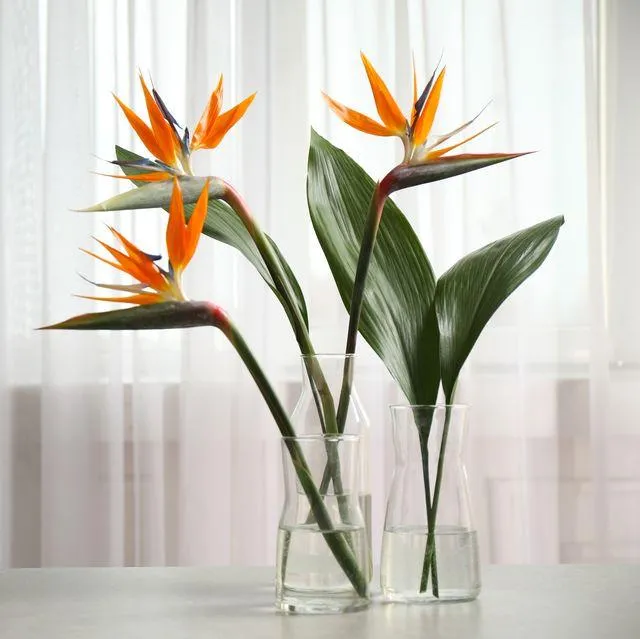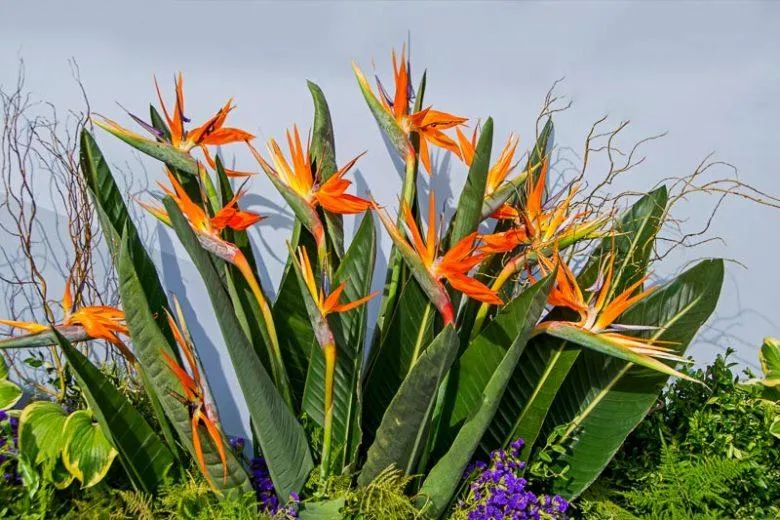A Complete Guide to Bird of Paradise Plant Care Indoors
If you’re looking to bring a tropical flair into your home, a bird of paradise plant is a great option. With their bold, colorful blooms and dramatic foliage, these plants really stand out. However, successfully caring for a bird of paradise indoors takes some know-how. In this guide, I’ll cover everything you need to know to keep your bird of paradise healthy and happy within your home.
Light Requirements
- Light is crucial for bird of paradise plants. They need bright, indirect sunlight for at least 6 hours per day.
- Direct sun through a window is ideal, but they can also do well in a spot that gets bright, filtered light.
- Lack of adequate light will result in leggy, straggly growth. The leaves may also develop an unhealthy yellow cast.
From my experience, a south or west facing window is a good choice. I’ve found that bird of paradise plants placed too close to a north window struggle and don’t bloom as well. The litmus test is how the leaves look – they should be dark green and fresh looking. If they appear dull or yellowish, it needs more sunlight.
Watering
- Allow the top inch of soil to dry out between waterings.
- Don’t let the plant sit in soggy soil for long periods, as its roots are susceptible to rot.
- In the growing season, water whenever the topsoil feels dry to the touch. Cut back to once every 7-10 days when the plant is not actively growing.
Here’s a tip: feel the weight of the pot before watering. A heavy pot means it doesn’t need water yet. A light pot means the soil is drying out. Moisture meters are also helpful for determining soil moisture levels.
Humidity
Bird of paradise plants appreciate moderate to high humidity levels year-round. While they can tolerate normal indoor humidity, they’ll be happier and healthier with higher humidity levels. A few tricks I’ve used include:
- Grouping potted plants together to raise ambient humidity levels.
- Setting the pot on a pebble tray with water to create humidity around it.
- Running a humidifier, especially in winter when indoor heat can zap moisture from the air.
Proper humidity levels are especially critical to encourage blooming. I’ve found limited or no blooms on plants in very dry indoor conditions.

Temperature
These plants originate from tropical Africa and Asia, so they thrive in warm conditions. Daytime temperatures between 70-80°F and nights no cooler than 65°F are ideal. Exposure to cold drafts or temperatures below 60°F can damage the leaves. During active growth periods, higher temperatures within those ranges are best.
Soil
A well-draining potting mix suited for foliage plants works well for bird of paradise. The soil should allow for adequate drainage to prevent root rot from overwatering. I recommend a mix containing:
- Coarse peat or compost
- Perlite or vermiculite for aeration
- Sand to improve drainage
A pot with good drainage holes is essential. Terra cotta or plastic are suitable. Re-pot the plant into a slightly larger container as it grows. Don’t keep it pot bound or it won’t bloom well.
Fertilizer
During the growing season from spring to fall, feed your bird of paradise monthly with a balanced liquid houseplant fertilizer diluted to half the strength recommended on the label. I like a formula with an N-P-K ratio around 20-20-20. Apply it every other watering and stop feeding in fall and winter when growth slows.
Pruning & Grooming
Deadheading spent flower spikes encourages reblooming. Simply trim them off where they join the main stem. Remove any sickly or discolored leaves, and trim leggy stems to maintain an attractive shape. Be careful not to overprune, as this can stunt growth. In winter, growth may slow or stop. The foliage differs between varieties, so learn how yours looks healthy. If in doubt, a photo from when you purchased it is helpful for comparison.

Pests and Diseases
Most houseplant pests avoid bird of paradise. However, watch out for:
- Mealybugs – Fluffy white masses in leaf axils or on stems.
- Scale – Hard, dome-shaped insects attached to leaves or stems.
- Aphids – Tiny soft-bodied insects that congregate on new growth.
For major infestations, neem oil spray or insecticidal soap applied as directed should clear them up. Rot from overwatering looks like limp, yellowing foliage. Improve drainage and reduce watering to cure it. Otherwise, these plants are generally trouble-free with the proper care.
I hope this guide has answered all your bird of paradise plant care questions! Feel free to experiment with adjustments to light, watering, and other conditions in your home. With some trial and error, you’ll soon have this tropical beauty happily growing indoors. Let me know if you have any other questions!
Indoor Bird of Paradise Plant Care Tips
| Light | Full sun to partial shade. Place in a south or west facing window. |
|---|---|
| Water | Allow soil to dry out slightly between waterings. Water when top 1 inch of soil is dry. Do not overwater. |
| Humidity | Higher humidity levels promote healthy growth. Use pebble trays or humidifiers if indoor humidity is low. |
| Temperature | Keep above 60°F. Does best in temperatures between 70-80°F. |
| Soil | Well-draining potting mix specifically for plants with succulent like leaves. Do not let sit in water. |
| Fertilizer | Use balanced liquid houseplant fertilizer monthly during spring and summer. |
| Pruning | Remove spent flower stalks to promote reblooming. Trim damaged or discolored leaves. |
| Pests | Watch for spider mites or mealybugs. Treat with neem oil or insecticidal soap if needed. |
FAQ
-
What kind of sunlight does a bird of paradise plant need?
Bird of paradise plants like lots of bright, indirect sunlight. Basically, they should get several hours of sunlight each day but not the super intense direct rays. Place them near an east or west facing window to get the best lighting.
-
How often should I water a bird of paradise?
These plants have thick, fleshy leaves so they don’t need water as frequently as other houseplants. Water when the top inch or two of soil feels dry. In the warmer months, about once per week is good. Winter months you can go every 10-14 days. Overwatering is a lot easier than underwatering with these guys.

-
What type of soil is best for bird of paradise?
Well-draining soil is crucial since they dislike soggy roots. A soil mix containing lots of components like perlite, vermiculite, or bark helps ensure good drainage. You can purchase a pre-made potting mix for tropical plants. Kind of like Goldilocks’ porridge – the soil can’t be too wet or too dry for these beauties!
-
How do I know if my bird of paradise needs fertilizer?
In the spring and summer when it’s actively growing, a diluted liquid fertilizer every few weeks does them good. The leaves will appear a vibrant green if it’s getting enough nutrients. However, cut back on fertilizing in the fall and winter when growth slows. On the other hand, yellow or pale green foliage may indicate it needs a nutrient boost.
-
Can bird of paradise plants be grown outdoors in colder climates?
They make nice outdoor plants in zones 9-11 where temperatures stay above 50 degrees F. Nevertheless, in colder parts of the country they’re generally grown as houseplants. You might get away with keeping one outside as a patio plant in the summer though, and bringing it in before frost.
-
How do I propagate new plants from my bird of paradise?
Propagating from stem cuttings is quite simple. Cut off 6-8 inch segments, remove the bottom leaves, and place the stems in a glass of water. Within a few weeks you’ll see roots developing. Once they have a good root system, transplant the baby plants to pots. Now you’ll have lots more exotic beauties without spending a dime!
-
My bird of paradise has yellow leaves – what’s wrong?
Yellow foliage typically means the plant is lacking nutrients. Likely candidates are too much or too little water, insufficient light exposure, or lack of fertilizer. Give it a dose of diluted liquid plant food and assess the other care factors. With care like adjusting its lighting or watering routine, those leaves should perk back up in no time. Let me know if the problem persists!

